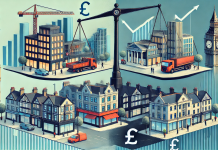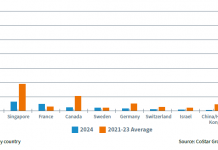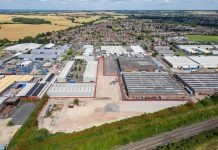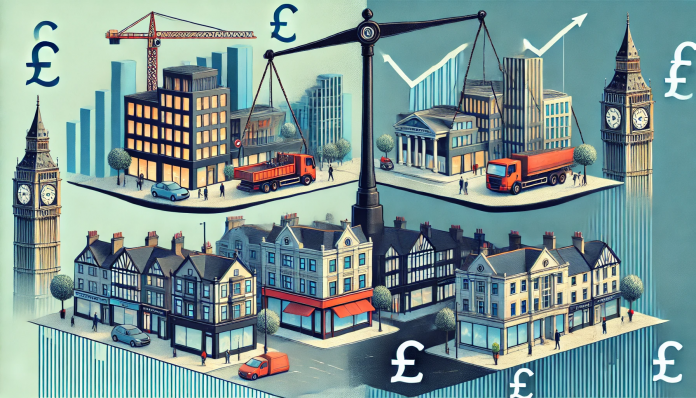The UK economy and commercial property sector continue to present us with seemingly contradictory trends and data, some suggesting renewal and growth while others paint a gloomier picture. Oliver Kolodseike, Colliers’ Director of Economics & Research investigates.
Cutting to the chase, who has the most convincing narrative? Both the nay sayers and ‘Reeves-ian’ optimists have political skin in the game, often drowning out reality with partisan commentary. The new UK Real Estate Investment Forecasts report looks at data – not drama – as we offer an analysis of the recent past, and forecast the short to mid-term future.
On the upside, signs of revival are evident: a return of positive capital growth across the office sector with notable increases in investment across the Big Six cities, driven be sustained rental growth across most asset classes. That’s at least two usages of the ‘g’ word. Add to this above average performance of retail warehouses and shopping centres, and the prospect of positive change looks promising. Furthermore, the Planning and Infrastructure Bill was introduced to parliament for its First Reading on March 11. Hope springs eternal!
In contrast, in per capita terms the UK might be understood as in a technical recession (sub 0% per capita GDP growth for two successive quarters), and the unemployment rate is creeping up. This is – it should be said – before the increase in National Insurance contributions comes into effect. The OBR and BoE, those three-lettered acronyms of foreshadowing, have both trimmed their growth forecasts. Nevertheless, the overall GDP trajectory over time is slowly upward.
And so we seem to be witnessing the macro-economic equivalent of Schrodinger’s Cat – both figuratively alive and dead, seemingly thriving and failing at the same time.
Investment up but incentives down
Looking back at Q4 2024, quarterly investment volumes increased by 45% to £15.2bn, the perkiest figure since 2022. Flows into Manchester more than tripled (£330m to £1.1bn), and investment in Leeds went from a very low 2023 base (£20m) to £600m. Most of the Big Six saw at least a two-fold increase in capital placement, with only Edinburgh inversely bucking the trend (down from £190m to £80m). This may reflect ongoing political uncertainty not likely to be resolved until the 2026 Scottish elections.
The office market in particular shows signs of increased activity, but again from a sluggish 2023. Purpose-built student accommodation continues to grow in significance (+12% y/y), but the picture is changing due to uncertain impacts of funding issues in the higher education sector. Increasingly, investors in this sector are advised to examine local dynamics very carefully.
Total returns growth across all asset classes is robust (9% for 2025 easing to 8.3% in 2027) with some sub-sectors outperforming the field (retail warehouses 9.3% per annum and shopping centres 9.2% per annum). However, a 17-year low in the gap between gilts/yield suggests limited scope for generating returns through yield compression alone. This will require changes in investor outlooks and readiness to create value through value-add strategies.
Buying into a retail narrative?
Retail investment volumes are the highest in three years, but consumer confidence remains below historical standards according to recent GfK research. Retail sales grew by 0.7% in 2024, an improvement on the last 24 months, and online sales seem to have stabilised around the 27% mark for some time, indicating those predicting the demise of bricks and mortar retail were incorrect.
A snapshot of issues currently facing retailers is less than rosy (increases for National Insurance, business rates and other operational costs), but falling inflation may well instil renewed confidence on the high street on both sides of the till further into 2025. Tourism revenues returning to pre-pandemic levels is also welcome news for resorts and similar destinations.
So what does it all mean?
As Chinese leader Zhou Enlai said in 1972 of the French Revolution “it’s too early to tell”, while we move into Q2, the extent to which the issues of planning and infrastructural investment logjams can be effectively gripped will be as important as the lack of fiscal headroom, looming welfare cuts and President Trump’s tariff travails.
Without sounding too non-committal, the evidence is far too contradictory to call anything apart from most prevailing trends are positive, and the commercial real estate sector is heading on a path of cautious rebirth and renewal.



















